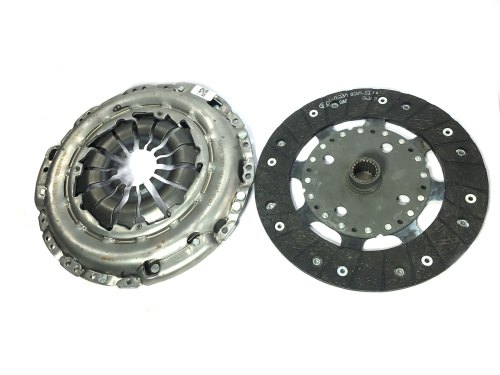The Clutch Disc rotates on the input shaft of the gearbox, the disc itself sits between the flywheel and the pressure plate, both of which rotate with the engine, so the clutch disc rotates with the gearbox and rotates in two directions. a metal surface that rotates with the motor.
Clutch discs have disc brakes and a brake pad like shoe pads or brakes. The material is cover with woven or non-woven materials, it also has a soft material like aluminum or metal. This increases the strength of the cover and the series of radial grooves in the front layer improves the retention between the steering wheel and the disc. The space between the disk centers has a transmission slot, so it provides a direct connection between the two. The torsional fluid between the retaining holes and the cover reduces friction and vibration. Disc clutch between lingheel and pressure plate.
The clutch disc transmits engine power directly to the transmission slot. The clutch disc, when connected to a high-pressure plate and a convection engine, generates and breaks an electric current from the engine to the transmission. Find out more Used Auto Parts
Maintenance Tips/Suggestions

Because pressure is applied to the clutch disc and is allowed to remain during normal driving, the clutch disc cover will take less time to normalize. Clutch contact is a symptom that may indicate wear, but it can be caused by oil leaking from the engine and clutch assembly, poor airflow, faulty disc brakes, poor clutch disc opening and clutter. between the engine and transmission.
Another clutch problem is clutch slip. This can lead to things like damaged deer plates, wear, joints or malfunctions, incorrect grip, and even normal wear and tear.
Withdrawal is the most common symptom or vice versa of deletion. Traction occurs when the clutch is not like at all, or when it is gradually release. Coupling joints are usually coupling joints, which are attached or unstable. Closures can cause pneumatic and hydraulic connections, defective plate spikes, and coupling discs with holes inserted. To solve your car braking problem, ask your traffic expert to test your car to find out what your symptoms are. This is the best first step of proper research.

